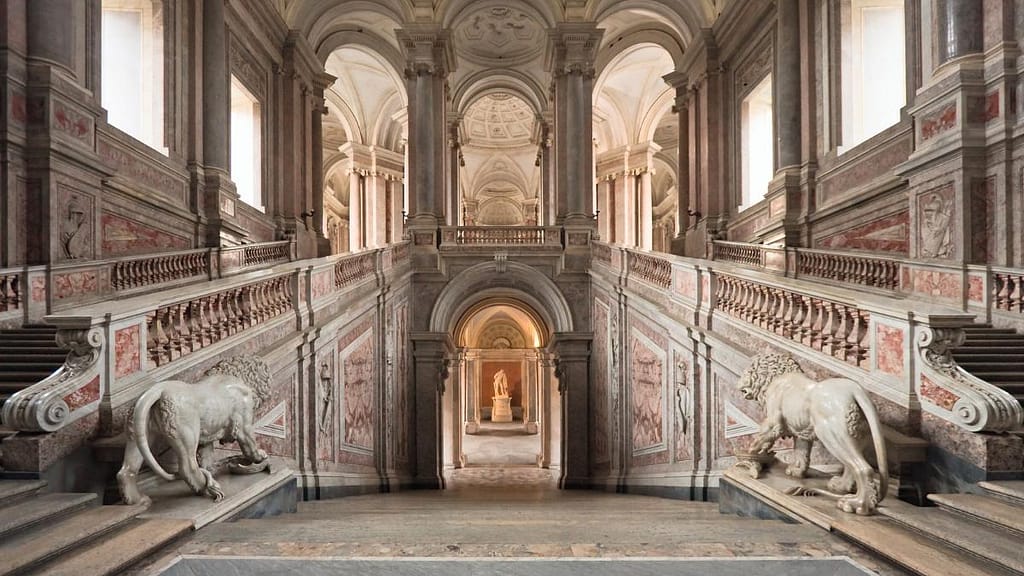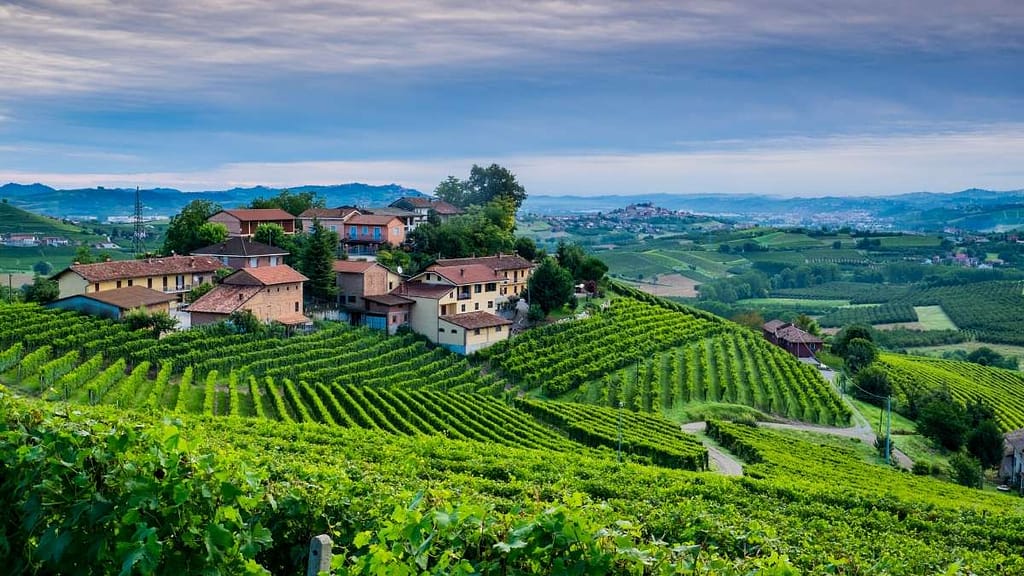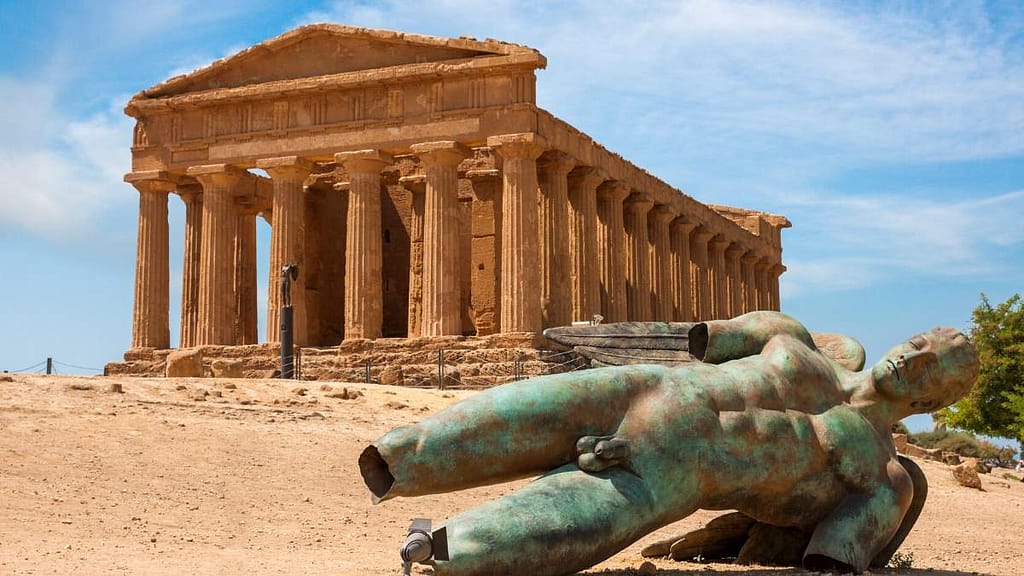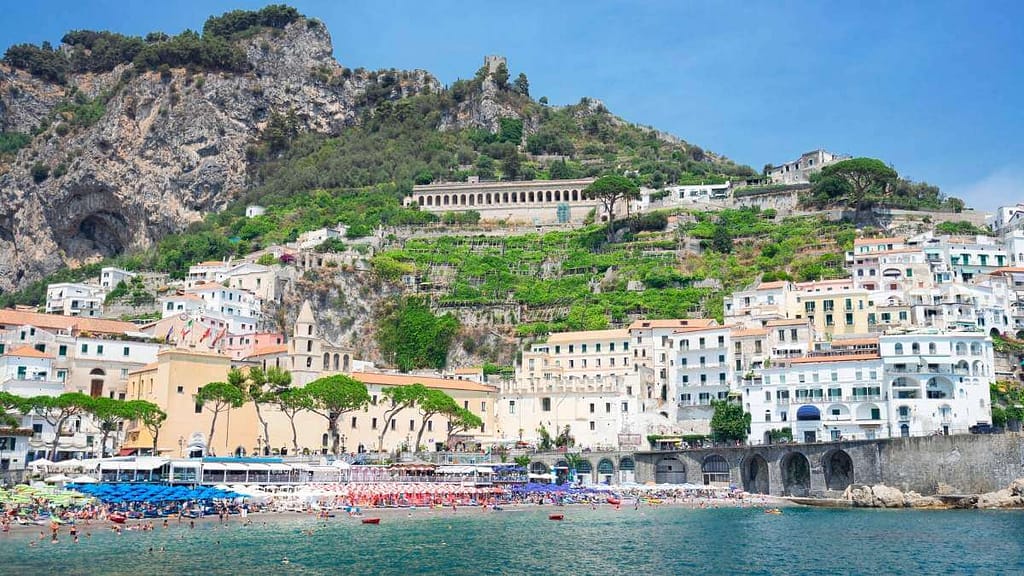About a half hour from Naples lies the magnificent Royal Palace of Caserta. Built for the Bourbon king of Naples, it was modelled after France’s famous Palace of Versailles. Reggia di Caserta, as it’s known in Italian, was the largest palace built in Europe during the 18th century and home to the Bourbons, who once ruled here.
A few centuries later, it’s just as awe-inspiring as it was back then. Surrounded by spectacular gardens with pools, fountains, statues and flower beds, Caserta is a stunning example of Italian Baroque created by the famous architect Luigi Vanvitelli. If you happen to be in the Campania region, a trip to the Caserta Palace should be on your list.
This post may contain compensated links. Find out more info in our DISCLAIMER.
Historical context of the Caserta Royal Palace
The royal family of the Spanish Bourbon kings of Naples ruled southern Italy during the 18th century. When King Charles of Burbon inherited the throne of the Kingdom of Naples, he decided to show off the Bourbon power by building an architectural marvel that would rival the grandeur of Versailles. To realize his dream, he enlisted the expertise of the renowned Italian architect Luigi Vanvitelli.

The plan included the design of the family’s royal residences and a magnificent new royal court with extensive gardens to rival all others in Europe at the time. By then, Luigi Vanvitelli had already made a name for himself. He worked on building the Trevi Fountain and stabilizing the dome of St. Peter’s Basilica in Rome when it started to crack. He also designed several other palazzos, bridges and churches in Italy.
@amongstromans Dreaming under the opulent ceilings of the Royal Palace of Caserta! ?? Prepare to be mesmerized by the regal beauty above. ?? #CeilingGoals #RoyalPalaceMagic #casertavecchia #reggiadicaserta #CampaniaAdventure #italytiktok #exploreitaly #italytravels #campania #italytiktok #caserta #CapCut
? Vivaldi – 2 Violins op 8 Allegro 1 – AllMusicGallery
His appointment to lead this project was a logical choice, and it became his largest and longest project. The construction of the palace started in 1752, on Charles’ 36th birthday. It was smooth sailing until 1759 when Charles abdicated his throne to become the King of Spain. The project slowed down and wasn’t fully completed when Vanvitelli died in 1773. His son Carlo and numerous other architects saw its completion in 1845.

With over 1,200 rooms, including official government offices, barracks, a university, a national theatre and a large library, the Royal Palace of Caserta is the largest royal residence complex in the world, covering an area of 247 acres. The palace is a testament to the architectural brilliance of the architect Vanvitelli, who created a magnificent masterpiece that seamlessly integrated with the surrounding natural landscape. In recognition of its exceptional value as a historical and cultural site, the palace was designated a UNESCO World Heritage Site in 1997.
Architectural splendor
The front of the palace might not look as impressive as you walk up to it. But, once you get inside, you are greeted by unparalleled architectural wonder. Prepare to be awestruck by the sheer scale of the Reggia di Caserta. You can see why this place is often called the Italian Versailles.



As the world’s largest royal residence by volume, it offers an impressive display of features that showcase the pinnacle of Italian Baroque architecture. With five floors, richly decorated rooms and monumental courtyards, every corner of the palace exudes magnificence.
Designed to impress, the palace spans 500,000 square feet (47,000 m2) over five floors and incorporates four internal courtyards. It boasts an impressive 1,200 rooms, 1,742 windows, 1,026 fireplaces and 34 staircases. Yes, you read that right—34 staircases.



Inside, you can view the Palatine Chapel, the throne room, state apartments, court theatre and the Picture Gallery. To me, the most impressive is the Grand Staircase – a breathtaking work of art in its own right, adorned with intricate frescoes, marble and gold leaf. The main staircase is a masterpiece of architecture and scenography that inspired future staircase design.
What to see inside
The Royal Palace of Caserta’s private apartments house an impressive collection of furniture, art and décor in the neoclassical style. Throughout the palace, you can admire spectacular ceilings, marble floors, and opulent chandeliers. Like any other former royal residence, the palace features paintings by renowned artists, elaborate frescos and silk wallpaper made in a nearby silk factory. If you like gold, you’ll feel right at home here, as everything is covered in gold leaf.




In addition to the private apartments, you have to see the Palatine Library. Commissioned by Queen Maria Carolina of Austria at the end of the 18th century, the library consists of five rooms, two antechambers and three additional rooms that house an extensive book collection of over 14,000 volumes. Queen Maria Carolina was the wife of Ferdinand IV of Bourbon, who inherited the Royal Palace of Caserta from his father, King Charles. While we couldn’t see all those rooms, we got a taste of the library in the reading rooms that are open to the public. Here, you’ll find some volumes, a couple of globes, a brass telescope and two barometers.
The Royal Palace of Caserta Gardens
Behind the spectacular Royal Palace of Caserta lie the equally magnificent gardens, a testament to the mastery of landscape architecture. As you leave the palace, you can follow a path that stretches for over 3 km (2 miles) before you. The park grounds cover over 121 hectares (300 acres), which is a lot of space.

You can wander down the path and admire the fountains and water features. If you prefer to walk less (especially on a hot day), you can also rent a bike. I recommend taking the shuttle from the rear of the palace building to the end of the gardens and then walking back. That way, you can fully take in the space and the design.

The Italian-style section unfolds with an artificial lake, grottos, and a building resembling a small castle, offering a delightful telescope effect as you explore. Then there’s the jewel in the crown: the English garden. Here, you’ll be greeted by a haven of natural woodland teeming with rare and exotic plants. Crisscrossed by peaceful creeks and adorned with sculptures, this section offers a tranquil escape.
Along the long path are five fountains and cascades that surround the canal. Each basin, some teeming with fish, is adorned with sculptures depicting mythological figures: the fountain of Diana and Actaeon, Venus and Adonis, dolphins frolicking around Aeolus, and the bountiful Ceres. These masterpieces are definitely worth a closer look.
What to see further afield
After you visit the Royal Palace of Caserta, stop by the Aqueduct of Vanvitelli, also called the Caroline Aqueduct (Acquedotto Carolino in Italian). It’s about a 20-minute drive from the palace. Vanvitelli designed the aqueduct to bring water to Caserta and the palazzo’s gardens along a 38 km (over 23 miles) long route. This ambitious project took about nine years (1753-1762) to complete. The design was modelled on the ancient Roman aqueduct system. You can easily mistake it for Roman architecture, with its three rows of arches measuring 55.8 meters (183 ft) high at its highest point.

Another great spot to check out in the surrounding area is the Monumental Complex Belvedere San Leucio, about a 10-minute drive from the palace. When King Charles envisioned Caserta as the new centre of his kingdom, he also planned to conduct a social experiment centred around silk making. The former hunting lodge was turned into a silk mill, with workers’ homes built around it. The project guaranteed these workers lodgings, access to education, medical care and all services. It was a social model based on the concept that valued work and equality, an idea unheard of in Europe.
After Charles abdicated his throne in favour of the Spanish crown in 1759, he left the project to his son, King Ferdinand IV. As Ferdinand was a minor then, the project took some time to develop. The Royal Colony of San Leucio finally came to fruition in 1776. The project didn’t last long due to the political climate in Europe. Today, you can visit the silk factory museum and check out the machines that are preserved almost intact.
Royal Palace of Caserta in cultural context
Over the years, the Royal Palace of Caserta has been a filming location for famous Hollywood movies, including Mission Impossible III, Angels and Demons, Star Wars Phantom Menace and Attack of the Clones.

While it was initially built for the Spanish Bourbon kings of Naples, the palace became the main residence of numerous royal families. During the war, it suffered damage from bombings and occupation by US troops. In 1945, the German forces surrendered to the Allies in Italy by signing the Surrender of Caserta. The document was signed at the Royal Palace of Caserta in April and formalized in May, signifying the end of WWII.
Recommended tours:
- Explore the Royal Palace of Caserta with a small tour group – book your ticket today
- Caserta Royal Palace Tour From Naples – reserve your spot
- Take a half-day trip to Caserta from Naples – treat yourself today
How to get here
The Royal Palace of Caserta is about 32 km (20 miles) north of Naples in a charming town of the same name. From the outside, this might look like another fancy building from another time. Don’t let the seemingly plain grass field in front fool you.
PRO TIP: Get free admission to the Royal Palace of Caserta with the Campania Artecard
The palace is open every day except Tuesdays, December 25 and January 1. The Royal Apartments open at 9:30 a.m., and the last admission is at 7 p.m. The park and gardens’ opening hours change seasonally.
Final thoughts on the Royal Palace of Caserta
If you are in the Campania region, I highly recommend a trip to the Royal Palace of Caserta and the royal gardens. It’s a sumptuous palace with even more breathtaking décor that will blow your socks off. The staircase alone is worthy of admiration. The expansive gardens are also a beautiful feature that only adds to the place’s charm.
Caserta is also a great spot for history buffs who want to learn more about the Bourbon dynasty and the Kingdom of the Two Sicilies. You can take a day trip from Naples, take a guided tour, or stay in the area for a few days. The town of Caserta is a cute town with many bars and restaurants. If you have time to stay overnight, it’s worth exploring. Also, remember to check out the aqueduct and the town of San Leucio to get a complete picture of what King Charles of Bourbon envisioned. While he didn’t get to enjoy it, you certainly can.




